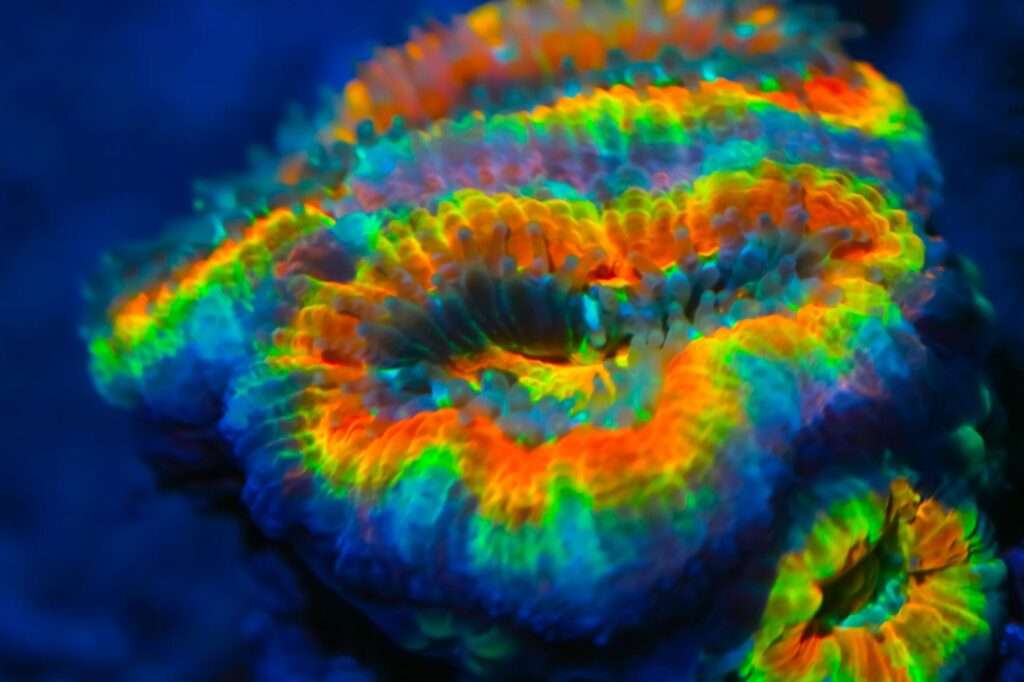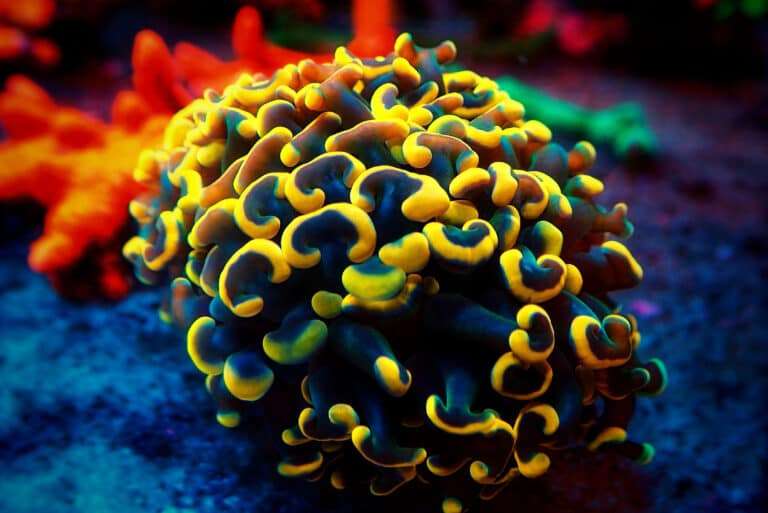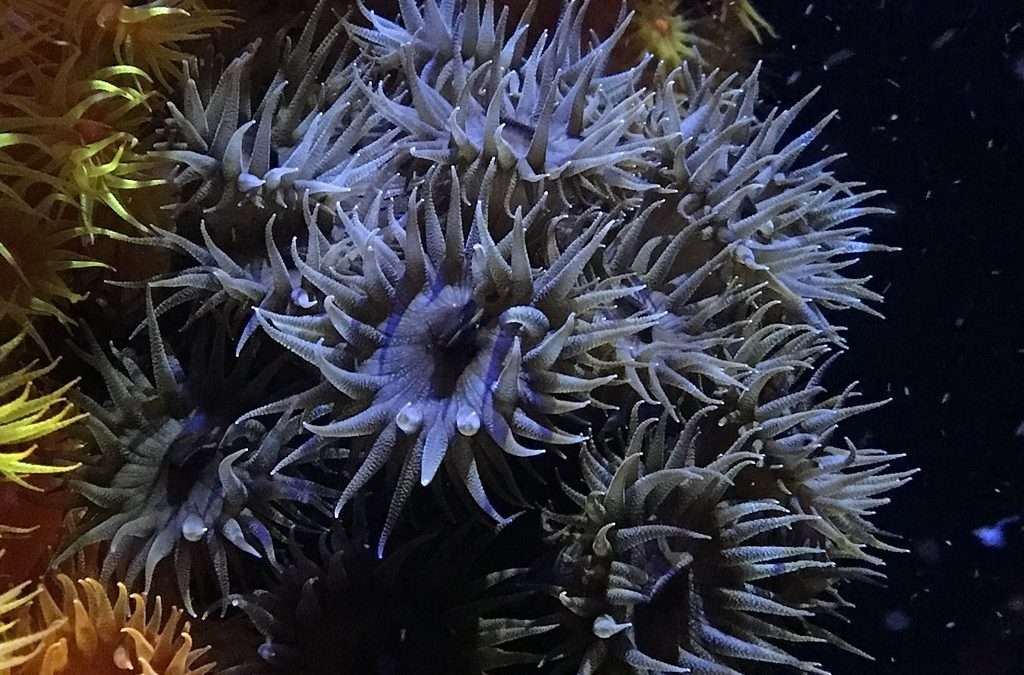
The most colorful member of the Acanthastrea genus is the Acan Lord also called “The Lord.” They are available in a wide range of color combinations, including red, purple, orange, green, blue, rust, brown, and shades of gray and tan.
Habitat
Edwards and Haime first described the Acanthastrea genus in 1848. Veron and Pichon first described the A. lordhowensis in 1982. With considerable success, the A. lordhowensis has been bred in captivity, giving rise to a range of hues. Reef farmers go by a variety of names, including Green Acan Lord, Blood Diamond Aussie Lord, and Watermelon Aussie Lord.
Hong Kong, the Flinders Reef, the Philippines, Middleton Reef, Elizabeth Reef, Lord Howe Island, Dampier Archipelago, Solitary Island, and the Burrup Peninsula are all places where the Acanthastrea lordhowensis can be found. The depth range for the Acanthastrea lordhowensis is 0-98 feet, and it inhabits a variety of reefal settings (0 – 30 m). Some colonies can grow to a diameter of 9 feet (3 metres). They spread out huge, tangled tentacles at night to feed.
Morphology
The corallites (skeleton formations under each polyp) on A. lordhowensis have very unequal walls in height, therefore the surface is not “even” when all the polyps emerge. Each polyp’s core has a poorly developed skeletal system, and the septa are thick and feature large teeth.
If the fleshy polyps are fully exposed, it can be a bit simpler to recognise. Since they have a deeper depression where their mouth is situated, this helps to avoid misunderstanding with Favites, Favia, and Moseleya corals. The species of Blastomussa and Lobophyllia are also easily confused with them. A simple way to identify some specimens is to irritate the coral to the point where it shrinks so that the skeleton may be seen. A. lordhowensis colonies can grow up to 9 feet in some cases (3 m). Unknown is the lifespan.
In Captivity

- Feeding
The Acanthastrea genus has evolved a number of feeding techniques. They get some of their nutrients from a marine alga called zooxanthellae through a symbiotic interaction. They can also take in dissolved organic substances and planktonic creatures as well as food particles from the water column. While they can be fed zooplankton and extremely small food, including Ricordea (a species of mushroom coral), A. echinata in captivity primarily consume nanoplankton and dissolved organics in the water.
- Social Interactions and Compatibility
Other corals are aggressively attacked by the Acanthastrea genus. The A. lordhowensis gets along with other members of its species, although generally speaking, members of various species tend to be more aggressive in different hues. However, they must be kept well separate from other corals. When they emerge from the sea at night, their tentacles might damage nearby corals. In addition, if neighbouring coral is close enough, they will flip onto it with their stomachs on it and eat the skeleton’s tissue there. They withdraw their stomach back within once their “enemy” has been digested. When soft corals are present, the Acanthastrea genus does not thrive as well. If the number of softies is too great, several Acan species will perish.
Table





